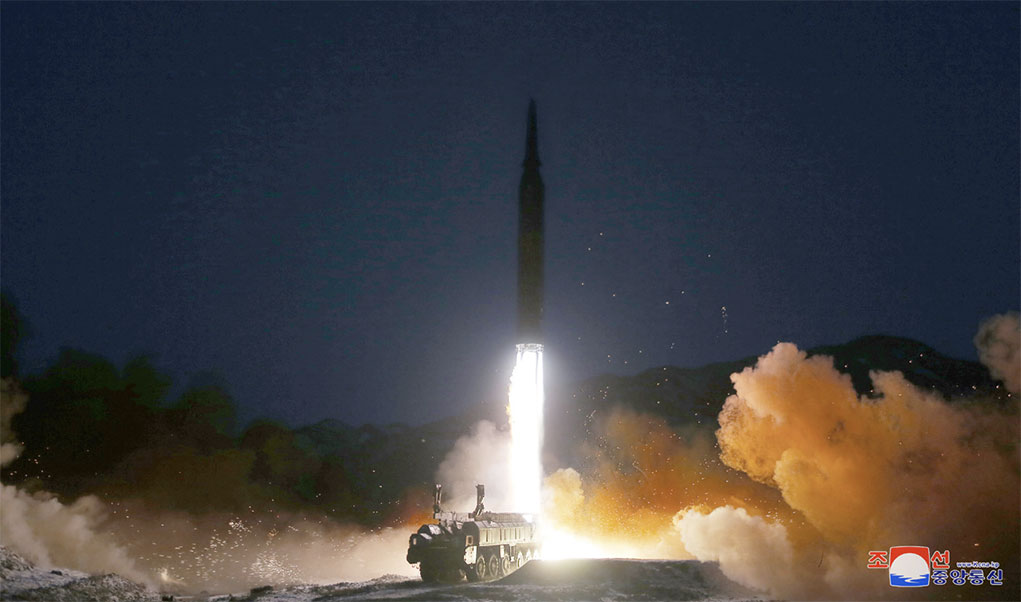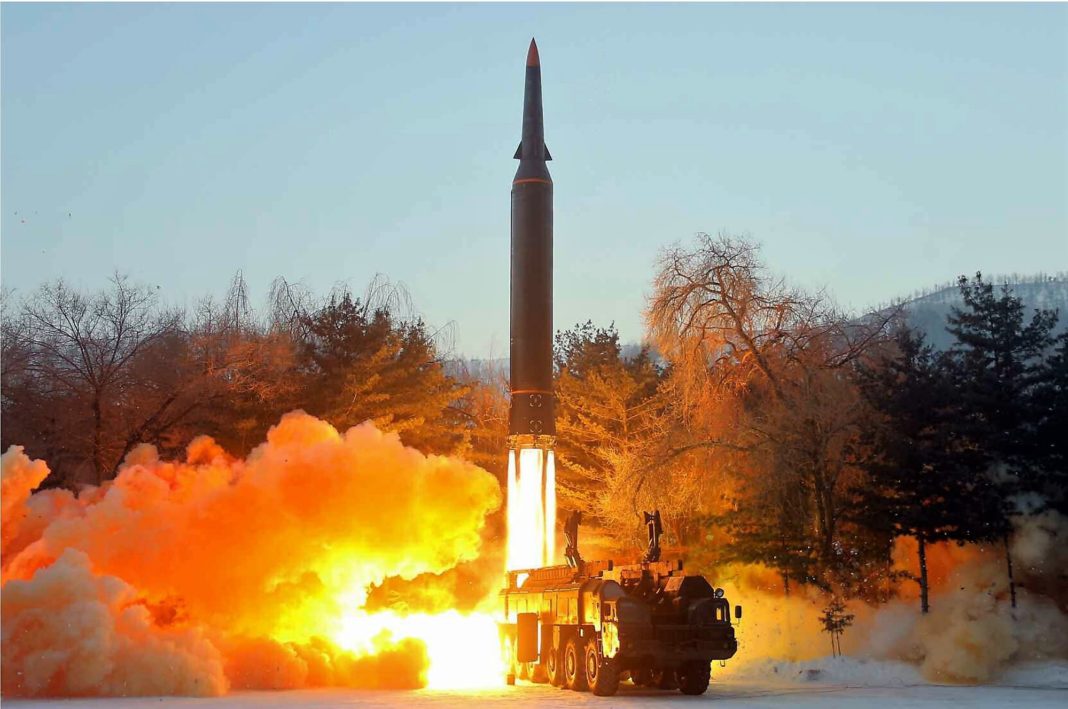A week after the second test of a missile with a hypersonic warhead, North Korea conducted another test flight of such a missile. According to the flight map released by the Koreans, the missile was launched into a ballistic trajectory. According to missile expert Tal Inbar, upon release from the missile body, the hypervelocity glide vehicle (HGV) pulled up (bounced) and deviated sideways from the ballistic path, demonstrating maneuvering at the hypersonic speed. North Korean authorities stated the missile precisely hit a target some 1,000km (621 miles) away.
Screen from KJU observation vehicle – THIS one was used for real time rendering of the missile’s trajectory. pic.twitter.com/eICGpYcotz
— Tal Inbar (@inbarspace) January 11, 2022
[playht_player width=”100%” height=”90px” voice=”en-US-JennyNeural”]
Three days later, on 14 January afternoon, North Korea fired two short-range ballistic missiles toward the Sea of Japan. The missiles landed about 430 km and reached an apogee of around 36 km. This launch seems to be unrelated to the hypersonic testing but emphasizes the North Korean muscle-flexing campaign.
This was the third reported test of a hypersonic glide vehicle reported by North Korea. South Korea and Japan both detected this launch, saying a missile had been fired from North Korea towards the sea of Japan. The launch was detected around 7:27 a.m. local time (22:27 GMT Monday) from North Korea’s Jagang Province toward the ocean off its east coast, the same location as last week’s test.


High res photos are coming in slowly, but with available images we could already be sure that the 11 Jan and 5 Jan 2022 HGVs are of the same design, which is different from the HGV design of Hwasong-8. https://t.co/7L7jpcvue6 pic.twitter.com/zcoaPzwQTl
— Taepodong (@stoa1984) January 12, 2022
With this successful test series North Korea joins Russia, and China which both have advanced and, to some level, deployed such weapons. The United States is still in the development phase, initial launches of HGVs were done but actual weapon fielding could take years.
[playht_listen_button]




















